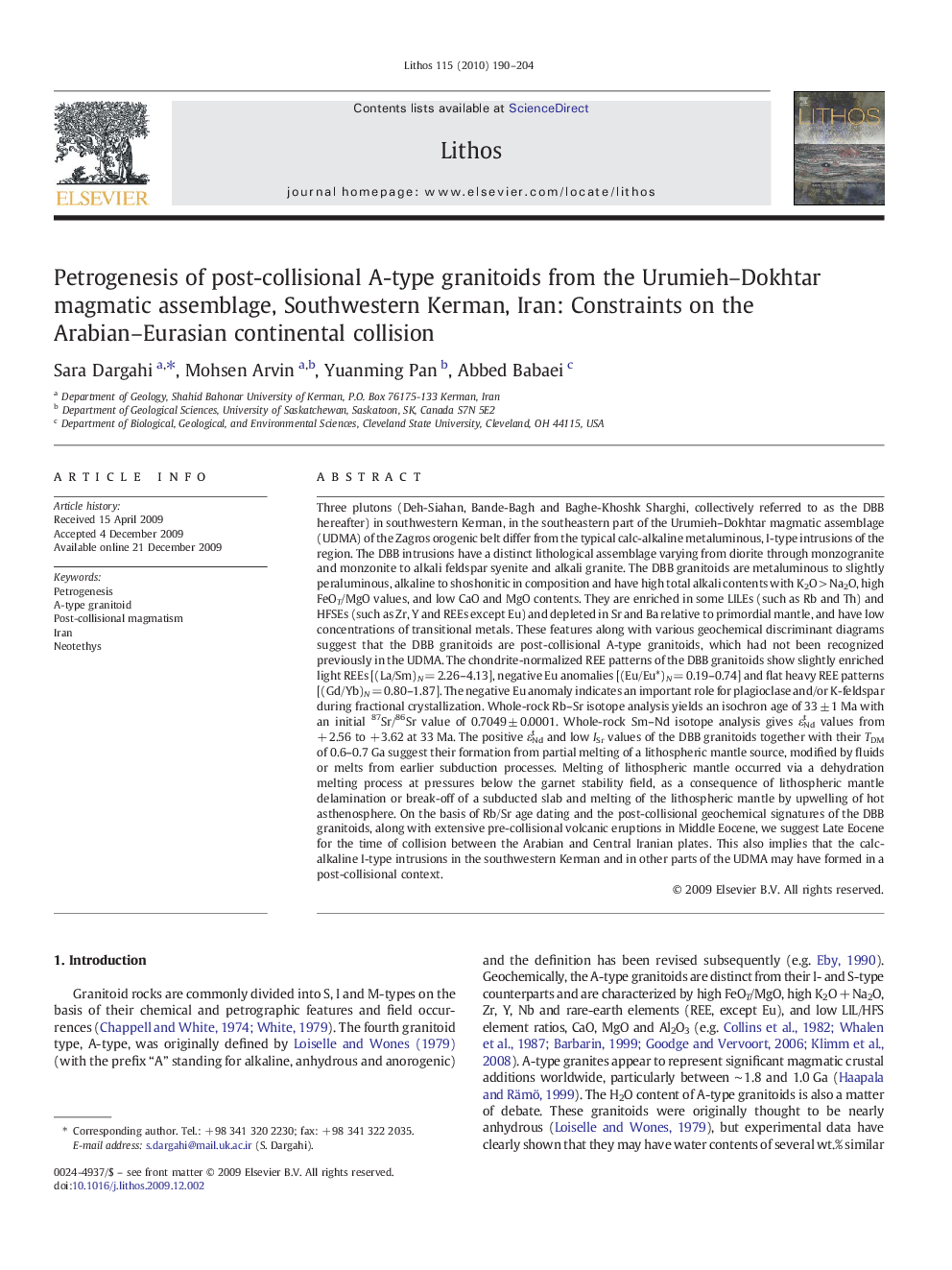| کد مقاله | کد نشریه | سال انتشار | مقاله انگلیسی | نسخه تمام متن |
|---|---|---|---|---|
| 4717039 | 1638735 | 2010 | 15 صفحه PDF | دانلود رایگان |

Three plutons (Deh-Siahan, Bande-Bagh and Baghe-Khoshk Sharghi, collectively referred to as the DBB hereafter) in southwestern Kerman, in the southeastern part of the Urumieh–Dokhtar magmatic assemblage (UDMA) of the Zagros orogenic belt differ from the typical calc-alkaline metaluminous, I-type intrusions of the region. The DBB intrusions have a distinct lithological assemblage varying from diorite through monzogranite and monzonite to alkali feldspar syenite and alkali granite. The DBB granitoids are metaluminous to slightly peraluminous, alkaline to shoshonitic in composition and have high total alkali contents with K2O > Na2O, high FeOT/MgO values, and low CaO and MgO contents. They are enriched in some LILEs (such as Rb and Th) and HFSEs (such as Zr, Y and REEs except Eu) and depleted in Sr and Ba relative to primordial mantle, and have low concentrations of transitional metals. These features along with various geochemical discriminant diagrams suggest that the DBB granitoids are post-collisional A-type granitoids, which had not been recognized previously in the UDMA. The chondrite-normalized REE patterns of the DBB granitoids show slightly enriched light REEs [(La/Sm)N = 2.26–4.13], negative Eu anomalies [(Eu/Eu*)N = 0.19–0.74] and flat heavy REE patterns [(Gd/Yb)N = 0.80–1.87]. The negative Eu anomaly indicates an important role for plagioclase and/or K-feldspar during fractional crystallization. Whole-rock Rb–Sr isotope analysis yields an isochron age of 33 ± 1 Ma with an initial 87Sr/86Sr value of 0.7049 ± 0.0001. Whole-rock Sm–Nd isotope analysis gives εNdt values from + 2.56 to + 3.62 at 33 Ma. The positive εNdt and low ISr values of the DBB granitoids together with their TDM of 0.6–0.7 Ga suggest their formation from partial melting of a lithospheric mantle source, modified by fluids or melts from earlier subduction processes. Melting of lithospheric mantle occurred via a dehydration melting process at pressures below the garnet stability field, as a consequence of lithospheric mantle delamination or break-off of a subducted slab and melting of the lithospheric mantle by upwelling of hot asthenosphere. On the basis of Rb/Sr age dating and the post-collisional geochemical signatures of the DBB granitoids, along with extensive pre-collisional volcanic eruptions in Middle Eocene, we suggest Late Eocene for the time of collision between the Arabian and Central Iranian plates. This also implies that the calc-alkaline I-type intrusions in the southwestern Kerman and in other parts of the UDMA may have formed in a post-collisional context.
Journal: Lithos - Volume 115, Issues 1–4, March 2010, Pages 190–204